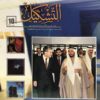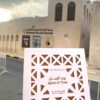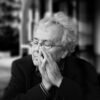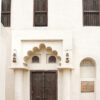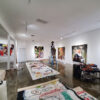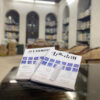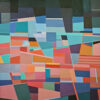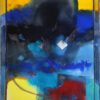Each period of time possesses its own needs that could accumulate to induce a shift, leading to a new phase. Life keeps going through those shifts, which are imposed by the cultural, social, economic, and political scene of any time. You cannot spot a stopping point; neither can you control this shift. Yet, you must try to keep up with it so you can make sense of it, but this perception is short of catching up with speed itself to shift to the next stage.
If modernism was thought of, at some point, to be the dismantling of the old reality to reproduce a new world, then this world would gradually reach a point where it needs dismantling to reproduce the next world, in a new modernism. This would keep happening until we reach some worlds that are beyond our understanding in the meantime, but it falls upon the coming generations. For instance, if language was the container of thoughts, then language, too, would meet the same fate, since it would need new terms to accommodate the new thoughts in order to express them. This means that modernism is the collective reproduction of all tools that can express its needs. While “Postmodernism”, which is the modernization of modernism or the new modernism, needs to dismantle the old to reproduce its tools and terms.
At first glance, it seems like we’re upon a deep ocean of chaos. That is because historical shifts are self-generating; it is not individuals who induce this stir, for instance, even before Newton discovered it, gravity has always existed. It is particularly difficult to identify some intellectual movements, as it is also difficult to identify a definition for “globalization”, which is considered a postmodernism concept, and it extends to cover all aspects of life; all forms, conditions, and developments. To illustrate, Postmodernity term alludes to a specific historical period, while Postmodernism represents a point in time that can be simulated and modeled, even if it persisted in our times.
Postmodernity refers to the philosophical and intellectual processing of the critical methodology and theory, while postmodernism is the practice and implementation of this methodology and theory in a particular field such as literature, art, music, or architecture… Postmodernity “springs from a historic shift in the West to a new form of capitalism to the ephemeral, decentralized world of technology, consumerism and the culture industry, in which the service, finance and information industries triumph over traditional manufacture, and classical class politics yield ground to a diffuse range of ‘identity politics’. Postmodernism is a style of culture which reflects something of this epochal change, in a depthless, decentred, ungrounded, self-reflexive, playful, derivative, eclectic, pluralistic art which blurs the boundaries between ‘high’ and ‘popular’ culture, as well as between art and everyday experience. How dominant or pervasive this culture is whether it goes all the way down, or figures just as one particular region within contemporary life is a matter of argument.” 1
The major shifts in all aspects that marked the post-WWII period had an impact on the postmodern arts; in particular; scientific and technical advancement and the emergence of modern criticism methodologies. The new experiences came in a try to express society’s reality and requirements. We can see that postmodernism introduced new approaches to the aesthetic discourse, which was able to absorb an infinite set of intellectual and constructive concepts. What we mean by postmodern arts is the productions of art in the period following the Second World War, during which the barriers between arts were removed so the art piece could become a way to contemplate and a subject to question.
1. Eagleton, Terry: “Postmodernity and Postmodernism”, translated by: Muhammad Sabila And Abd al-Salam bn Abd al-Ali, i. 1, Toubkal Publishing, Morocco, 2007. p. 10
Art historian, curator, visual artist, & editor-in-chief of AlTashkeel magazine. she holds a Ph.D. with distinction in "Art & Science of Arts," in addition to holding an MFA in Fine Arts and an MA in Philosophy of Art. She has numerous published books that provide documentation for Art in the Arab World.



